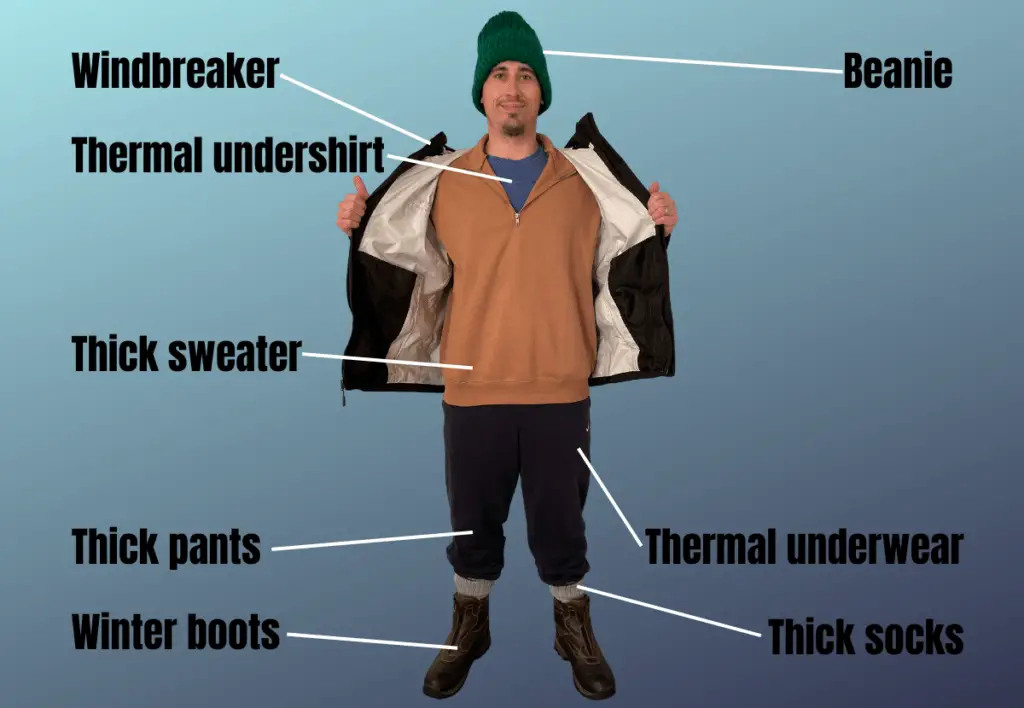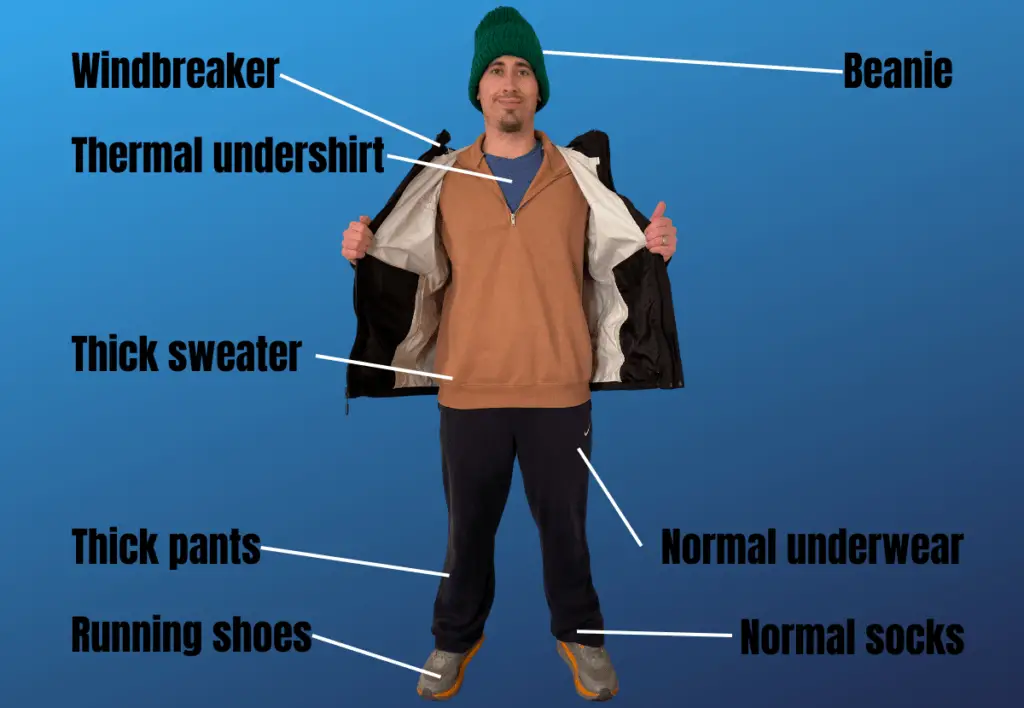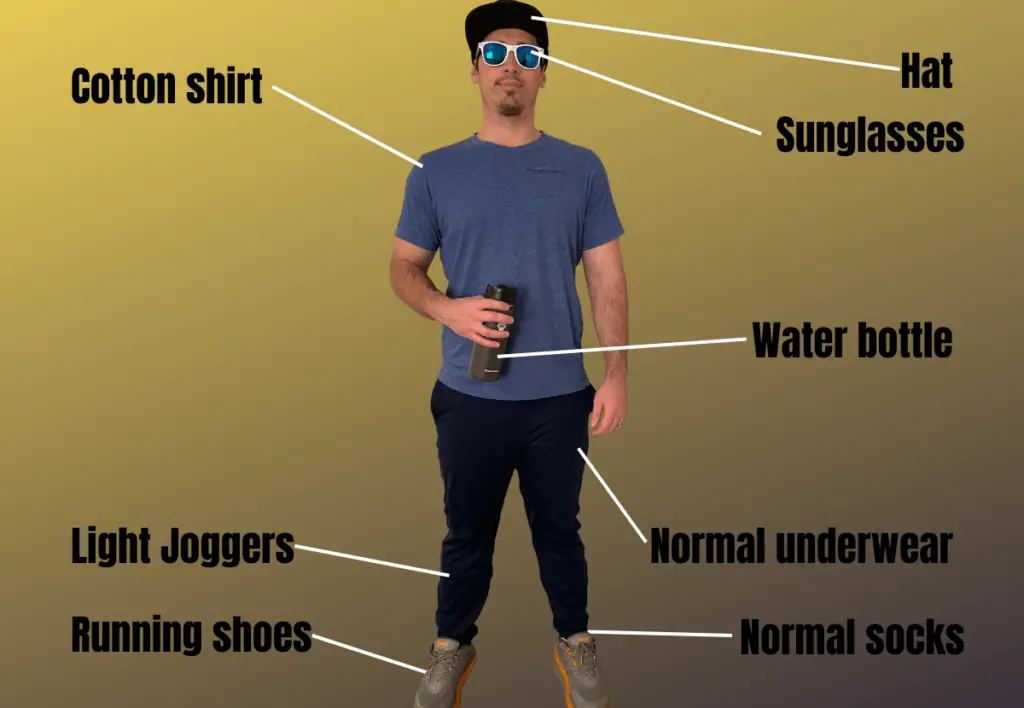Boise, Idaho is known for its distinct four seasons. With these four seasons come many different weather scenarios that can be difficult to prepare for. There’s nothing worse than dressing the wrong way, especially in the winter. So, how should you dress for the winter in Boise?
From December to January, you should wear a sweater plus a jacket, a beanie, gloves, thick pants, and waterproof shoes. A jacket and thick pants will suffice in February as the weather begins to warm up. March is nearing spring so a light sweater and pants or even shorts are fine.
That said, everyone tolerates cold weather differently. Below I explain exactly what I wear during the winter months in Boise as a local and provide you with my recommended winter wear.
How to Dress for Boise Winter
| Winter Months | What to Wear | Average Temperature |
|---|---|---|
| December / January | Thermal underwear (recommended) Thermal shirt (recommended) Thick sweater Windbreaker jacket Thick pants Waterproof shoes (recommended) Beanie, scarf, gloves, thick socks | High 25°F Low 18°F |
| February | Thermal underwear (optional) Thermal shirt (optional) Light windbreaker jacket or snow jacket Thick pants Waterproof shoes (optional) Beanie, scarf, thick socks | High 46°F Low 27°F |
| March | Standard cotton underwear Cotton shirt Light windbreaker jacket or hoodie Pants or shorts Sneakers, running shoes, heels, flats, open-toed shoes Cap, sunglasses, water bottle | High 60°F Low 40°F |
Depending on the month, you’ll want to dress accordingly as some months are cold and wet and others and others are warm and dry. Below we’ll examine each winter month in Boise along with which outfit is best for each.
How to dress in December / January

December is the coldest and wettest month of the year in Boise. Not only does the city receive the most amount of rain during December, but snow begins to fall as well. Hence you’ll want to wear something that keeps you warm and dry.
January, although not as wet, is still just as cold and has the potential to be as wet if there’s a lot of snow, so I generally wear the same type of clothes for both months.
Wearing multiple layers is recommended to keep warm when outside, but also so you can remove layers as needed when you enter somewhere warm such as a coffee shop, restaurant, or your house.
Base layers
A warm and comfortable base layer is key to an overall successful winter outfit. Below is what I wear throughout December and January in Boise.
- Shirt: A thermal short or long-sleeve shirt is the perfect start to your base layer.
- Sweater: A thick cotton or wool sweater helps keep the warmth your body produces close.
- Underwear: Long thermal underwear is essential for winter in Boise—especially if you plan on wearing jeans or sweatpants.
Outerwear
You need a good jacket to deflect the windy and cold conditions during these months, otherwise, any rain or snow could soak through and get the rest of your outfit wet.
If your base layer is fitted appropriately, then you can get away with a quality windbreaker. However, for those of you who are more sensitive to cold weather or whose base layer isn’t up to par, I recommend wearing a thick coat or puffer jacket.
Pants
I generally wear jeans, sweats, or joggers during the winter. But, if you plan on playing in the snow you’ll need a proper pair of snow pants, or else you’ll be soaked and freezing.
Again, jeans, sweats, or joggers might not suffice if you’re not wearing a proper base layer.
Footwear
During Boise’s wettest months, a dedicated pair of winter shoes are a must if you don’t want your dailies to get destroyed.
Basically, any closed-toe show will work fine. I wear Hoka One One (running shoes) all throughout winter with minimal issues.
That said, my socks do get wet if there’s any deep snow or puddles I have to walk through. That’s why I recommend wearing a dedicated pair of winter boots or waterproof shoes, especially if you plan on playing in the snow or doing winter chores like shoveling snow.
Accessories
Beanies, gloves, a scarf, and thick socks are all essential accessories during December and January.
The freezing temperatures combined with snow and a slight wind chill make for an extremely chilly couple of months that are guaranteed to freeze your ears, hands, and feet (literally).
According to NHS UK, frostbite can damage your skin in temperatures below 31°F with your hands, feet, nose, and ears most likely to be affected first.
Since Boise’s winter temps range anywhere from 25°F during the day and can hit single digits during the night, frostbite can become a real concern. So ensuring these extremities are covered is really important.
Average temperature in December / January:
- High 25°F
- Low 18°F
How to dress in February

February in Boise is when the weather begins to warm up slightly. Although the nighttime temps are still well below freezing, the average daytime temperature sits around the mid-40s.
This means the snow still falls at night but begins to melt during the day which makes for extremely wet and slushie conditions.
So, you might not need to dress as warm, but you still want to be prepared for similar weather as experienced in December and January.
Base layers
Ensuring you’re prepared for any weather in February is important as it’s still cold and wet. However, the daytime can get warm so you may need to peel off a layer or two to be comfortable.
- Shirt: A thermal shirt might not be necessary during February. You can get away with wearing a plain cotton shirt.
- Sweater: A lighter sweater during February is a perfect balance of warmth and comfort. Wool isn’t necessary, as a simple cotton sweater will work fine.
- Underwear: I’d continue to wear thermal underwear in February just in case the cold tries to creep in.
Outerwear
A windbreaker jacket combined with a light sweater should be enough to keep you warm and cozy in February. If you’re skipping the thermal shirt and sweater, I still suggest wearing a heavier waterproof jacket like a puffer coat or heavy snow coat though.
Pants
I still wear jeans, sweats, or joggers during February as the sun isn’t quite warm enough to justify wearing shorts (nevertheless, some locals wear shorts throughout winter). You can get away with wearing a thick pair of pants with no thermal underwear during February.
Footwear
Considering February can still mean wet conditions, I still recommend wearing a dedicated pair of snow shoes that you don’t mind getting wet and that will keep your feet dry. The mix of rain and snow will soak right through any shoes with a mesh or cloth design.
Accessories
Personally, I still rock a beanie and scarf during February, however, I drop the gloves. If your hands are prone to freezing in even slightly cold weather, gloves are still recommended.
You’ll likely find that the daytime is more bearable and requires fewer accessories versus when the sun begins to set and you’re scrambling to throw everything back on as the freezing temps set in.
Average temperature in February:
- High 46°F
- Low 27°F
How to dress in March

Technically, March is still winter in Boise—at least until March 20th when it officially turns to spring. It’s also one of my favorite months because the warm weather begins to stick around and my birthday lands on the 24th (woo-hoo).
Although snow can still fall in March (I know it’s crazy), it doesn’t stick to the ground as the daytime highs are just too warm. Nonetheless, it can still rain so having a light jacket nearby if needed is essential.
Base layers
- Shirt: Short-sleeved shirts and even tank tops can be worn during March. A thermal shirt might be too warm.
- Sweater: A light, windbreaker jacket or a sweatshirt is all you need during March.
- Underwear: You can go back to wearing your standard cotton undies as spring approaches.
Pants
Although some people might prefer to wear pants in March, this is when I bust out my favorite pair of basketball or sweat shorts. It’s chilly enough in the evening to wear pants but warm enough during the day to sport some shorts or yoga pants.
Footwear
With the exception of a couple of rainy days, you can comfortably wear sneakers, running shoes, heels, flats, and open-toed shoes in March. Just be aware that it still gets chilly at night so it’s best to have a pair of closed-toe shoes you can change into.
Accessories
Few people will prefer to wear winter accessories during March in Boise, and will instead swap them out for items commonly utilized in the spring.
That means you can put away the beanie, scarf, and gloves, and replace them with a cap, sunglasses, and a water bottle. Even though it’s not blazing hot yet, it’s warm and sunny enough for these spring essentials.
Average temperature in March:
- High 60°F
- Low 40°F
If you’re planning on driving in Boise during the winter, make sure you and you’re vehicle are prepared and know what to expect as far as road conditions and safety precautions.
